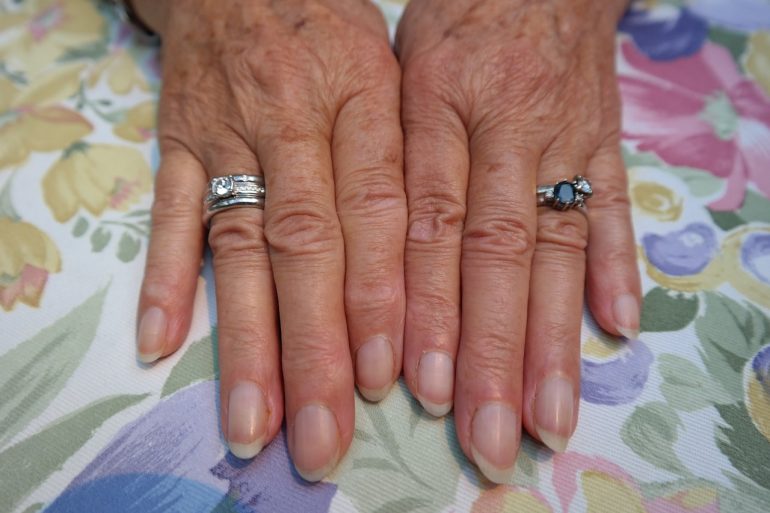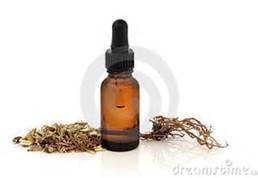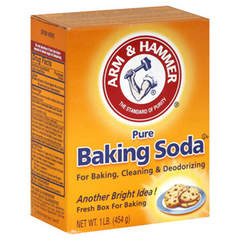The body has a knack for letting us know when something has gone awry and your nails are no exception. Their shape, texture, color, and overall condition can clue you in on what’s happening with your health over the last six months. Abnormalities in your toenails or fingernails can sometimes indicate a serious underlying disease.
Be sure to visit your health care practitioner if your nails have changed in color, texture, shape or thickness.
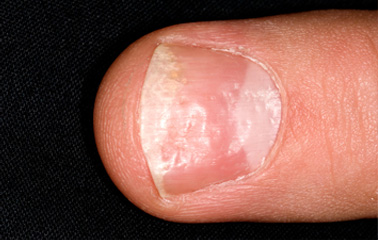
Pitted nails
Pitting on the surface of the fingernails can be caused by a number of disease such as psoriasis, eczema, reactive arthritis and alopecia areata. Nails can sometimes become loose and pull away from the nail bed. In severe cases, the nails may crumble.
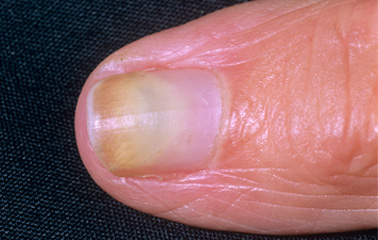
Discolored nails
Many times discolored nails are caused by fungal infections. Fungal infections in nails can turn white, black, yellow or green. The nail can also become brittle. The skin underneath and around the nail can sometimes become inflamed and painful. This tends to suggest a yeast infection rather than a fungal one.
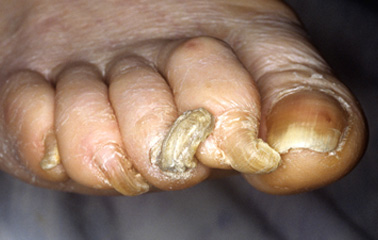
Ram’s-horn nails
This condition is usually seen in older individuals. These toenails are thick and overgrown, and impossible to but with nail clippers. This disorder is known as “onychogryphosis”. On occasion these nails need to be removed by a podiatrist or doctor.
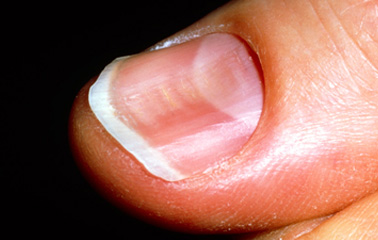
Spoon-shaped nails (indented)
Fingernails that curve inwards like spoons (known as “koilonychia”) can be a sign of an underlying medical condition, such as iron-deficiency, haemochromatosis (too much iron), Raynaud’s disease or lupus. However, spoon-shaped nails can be perfectly normal in children.
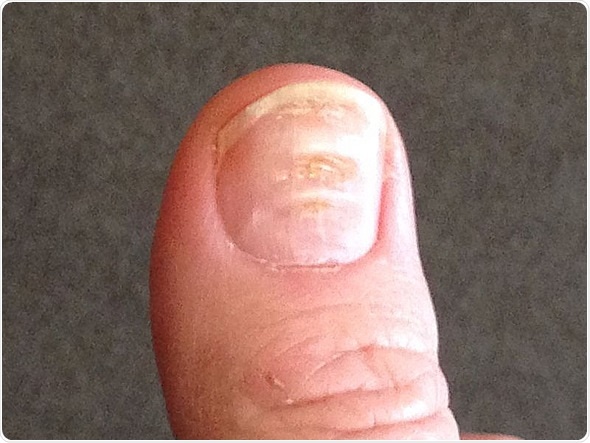
Grooves on the nails- Beau’s Lines
This condition is recognized by indentations that run across the nails. The indentations can occur due to injury, severe illness, or zinc deficiency. This condition may also indicate diabetes or peripheral vascular disease, as well as other illnesses that are associated with a high fever, such as scarlet fever, measles, mumps and pneumonia.

Clubbed Nails
Clubbing of the fingertips can run in families and be entirely harmless. However, if it suddenly develops, it may be a sign of an underlying medical condition, such as lung disease or heart disease. The easiest way to spot clubbed fingertips is to hold your fingers horizontally in front of you, so you are looking at the nails side-on. Normal nails should dip downwards towards the cuticle. With clubbed fingertips, this natural angle is gone and the nails are in line with the top of the fingers.
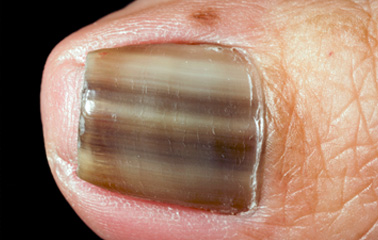
Dark stripes
Dark stripes in nails may occasionally indicate a form of skin cancer called subungual melanoma. It usually affects only one nail. This is worth having your doctor check. If you have darker skin, it’s fairly common to have streaks of the pigment melanin down your fingernails.
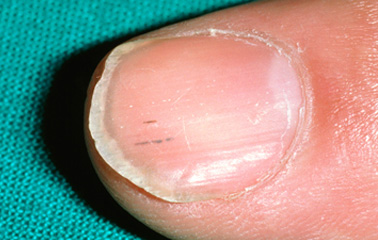
Little brown streaks
These fine lines can look like splinters under the fingernail. They are known as splinter hemorrhages. They can indicate injury to the nail. If the “splinters” are in numerous fingers it may be a sign of a heart valve infection, known as “endocarditis”. This condition can also be associated with other health conditions, such as scleroderma, lupus, psoriasis and rheumatoid arthritis.
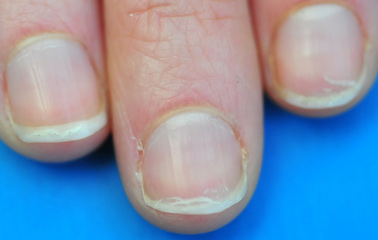
Splitting of the finger nails
Nail splitting can occur along the length of the nail, or layers of the nail can flake off, known as “onychoschizia”. Splitting nails is also known as brittle nail syndrome. This can be linked to frequent use of nail polish and remover, or repeated nail trauma. Consider applying vitamin e oil to nourish the nails and avoiding nail polish and remover.
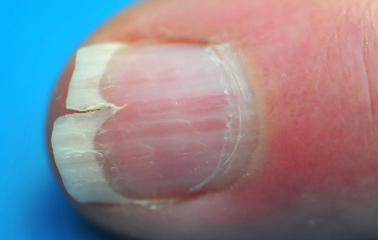
Vertical ridging
There is no concern for this condition that is caused by aging. Ridges run from the nail bed to the tip of the fingernail. It generally starts in one or two nails and overtime can appear in all nails. Gentle filing and buffing may help to smooth them.
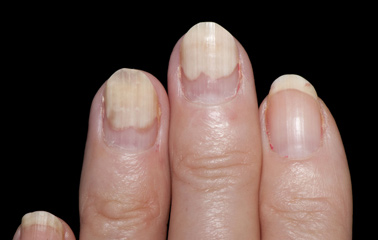
Nail lifting (Detached Nails)
Disistal onycholysis is a condition in which the tip of the nail separates from the nail bed. This can happen with the fingernail or toenail. There are numerous cause for this condition including psoriasis or fungal disease. A common cause is frequently overzealous manicures or cleaning under nails with sharp objects.
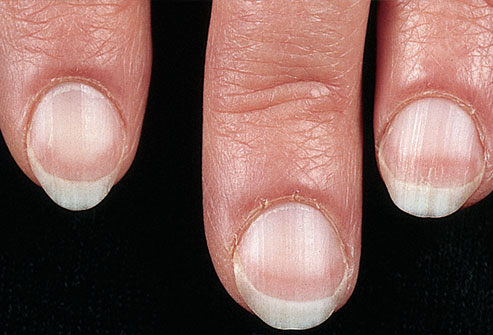
Terry’s Nails
Many of the nails will appear white except for a narrow pink band at the tip. In some cases the cause is attributed to aging. In other cases, however it can be a sign of serious underlying condition, such as liver disease, congestive heart failure, kidney failure or diabetes.
Additional Fingernail Conditions
The study of fingernails is sometimes called Onichognomy or Onychognomy. Below are some of the common fingernail conditions that can be found, along with their health indication. *The information here is not in any way intended to diagnose, or as a substitute for proper medical evaluation.
| Problem | Potential Medical Cause* |
| Horizontal Ridges on Fingernails (Beau’s lines) | Anemia or malnutrition. |
| Horizontal White Lines | Kidney disease, Hodgkin’s disease, or heart disease |
| Vertical Trenches | Kidney disorders, iron deficiency, general aging. |
| Vertical Splitting | Calcium deficiency. |
| Vertical Red Lines | Rheumatoid arthritis or high blood pressure |
| Pitted Nails | Psoriasis, parasites, or eczema |
| Brittle Nails | Calcium, Vitamin A, and/or iron deficiency |
| Blue Nails | Circulatory or pulmonary problem (asthma or emphysema) |
| Yellow Nails | Liver problems, diabetes, or lymphatic system trouble. |
| White Nails | Liver problems, kidney disorders, or anemia. |
| White Spots on Nails | Zinc deficiency |
| Nails Curving Down at Tips | Heart or lung problems. |
| Nails Curving Up (spooning) | Anemia, Iron deficiency. |
| Flat Nails | Anemia, thyroid disease, or Vitamin B12 deficiency. |
| Infection Along Edge of Fingernail | Paronychia |
References:

